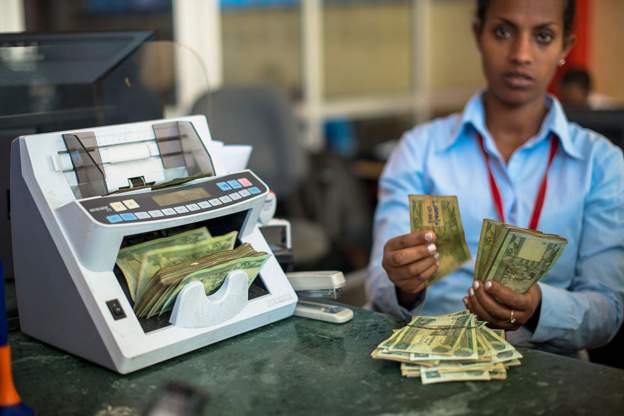During predates banking or financial system, individuals provided either cash or an item to another individual within an arrangement that the borrower will return cash or item to the lender with or without interest in the future. Peer to Peer lending occurs when a lender and borrower transact business without the role of any intermediary. P2P lending differs from traditional lending where a financial institution serves as an intermediary, mobilizes capital from its client base and lend.
The fast-paced fintech innovation has driven peer-to-peer lending. According to The Business Research Company, the global P2P lending is valued at $143.64 billion in 2023.
Peer-to-Peer lending is categorized into:
Informal P2P lending where an individual within a circle of friends or colleagues requests a loan usually through face-to-face interaction or phone call. The transaction is usually undocumented, trust-based and on the ability of network to influence the behaviour of a borrower to pay up. The blacklisting of an individual borrower becomes a deterrent to pay up on time. The absence of mechanism of enforcement is a challenge.
Formal P2P lending which uses digital tools like online platform to connect a borrower and lender to transact loans, involving a limited role of an “intermediary” who provides and maintain the platform to facilitate loan processing. The “intermediary” is not a party to the transaction, unlike a bank will serve as an intermediary in similar loan transactions. All risk are borne by both parties. U.K.’s largest P2P lender, Funding Circle for small-to-medium enterprise lending, Lending Club, Prosper, SoFi, Upstart and Peerform, CreditEase, China Rapid Finance, Dianrong are examples of formal P2P around the world.
The advancement of emerging technologies such as blockchain gave rise to the third type. Facilitated by Decentralized Finance (DeFi), it promises to revolutionize financial services by replacing the “intermediary” in the formal P2P lending processing with a decentralized system powered by blockchains. In effect, any one with internet connection can network with others to transact financial services. It is estimated that loans issued through DeFi lending protocols is increasing at an annual rate of 800%+ to $23 billion. (DeFi Risk, Regulation, and the Rise of DeCrime)
Risks and Challenges
A key challenge affecting most P2P lending platforms is the little or zero restriction on borrower’s eligibility which can lead to high borrower defaults. Some lenders on the P2P lending platforms may not have liquidity to finance loans. Irrespective of the P2P lending type, it is risk-associated.
Top on the list is a high default due to inability to enforce transactions. It must be noted that financial institutions suffer same. The key risk with P2P platforms is the absence of direct regulation by financial regulators, exacerbating the risk levels. An example is China's Ezubao P2P lending platform before it ceased operations, suffered over 900,000 P2P lender lost, collectively 7.6 billion USD.
Also DeFi-based P2P lending has new risks like hacking, money laundering and other fraud. Other risks related to P2P lending include misleading advertising and standardized disclosure in terms and conditions.
Given the high level of risks in P2P lending, it is imperative for platform operators to ensure detailed information is provided on the risk borne by lenders, protect identity of users and implement measures to prevent misconducts by both parties. Also, such platform must implement protection for transactions including the use of bank escrow account services to manage lenders’ funds and borrowers’ payments. Further, P2P lending platforms should ensure user-friendly interfaces.
Regulations
Regulators are still crafting ways to regulate P2P platforms. Hence, many of these are either unregulated entities or taking advantage of regulatory arbitrage where they package P2P lending products to ensure it takes advantage of the cross-sectoral regulatory gaps or is offered outside existing legal frameworks. Banking and Security Exchange regulators are working to formulate rules to caution and protect clients.
Some banks are partnering with P2P lending platforms or thinking about creating services similar to P2P platforms in order to service SMEs clients whose lack of credit scores, records or business history makes them high risk.
Some key benefits of P2P lending platform includes access to lending services to all, democratic and transparent loan acquisition, lower transaction costs and interests than traditional loans, and efficient loan processing, hence, faster service delivery.
In a wrap, P2P lending given its long history, is here to stay. Regulators must ensure they regulate operation while P2P platform providers ensure a responsible lending environment. Borrowers and lenders must take cognizant of its risky nature to mitigate risks.
Dr. Kwami Ahiabenu, II is a Tech Innovations Consultant. You can reach him at Kwami@mangokope.com
Latest Stories
-
NDC Mining Committee for 2024 campaign refutes allegations of recruiting thugs for elections
30 seconds -
Traction Control: A lifesaver with an off switch? Here’s why it exists
4 mins -
I don’t need anyman to woo me with money – Miss Malaika 2024 winner refutes pimping claims
11 mins -
”Kurt Okraku sabotaged my national team career because I refused to sign with Dreams FC” – Najeeb Yakubu
12 mins -
Businesses urged to leverage Generative AI for enhanced customer engagement
16 mins -
MultiChoice Ghana partners with Ghana Hotels Association to elevate guest entertainment
24 mins -
Bawumia’s music streaming app or Mahama’s pay-per-view TV channel?
29 mins -
Karpowership Ghana empowers 40 Takoradi Technical University students with scholarship
31 mins -
We expect significant reduction in prices of petroleum products in coming weeks – CEO AOMC
44 mins -
Betway Africa offers once-in-a-lifetime ‘Play-on-the-Pitch’ experience at Emirates Stadium
53 mins -
I coined the term ‘hype man’ in Ghana – Merqury Quaye
59 mins -
Vasseur questions ‘strange momentum’ of Formula One race director change
1 hour -
“I am disappointed in Kojo Manuel” – Merqury Quaye on “no tie” comment
1 hour -
Nana Kwame Bediako; The beacon of unity
1 hour -
Western Region: NDC youth wing embarks on phase 2 of ‘retail campaign’
2 hours

